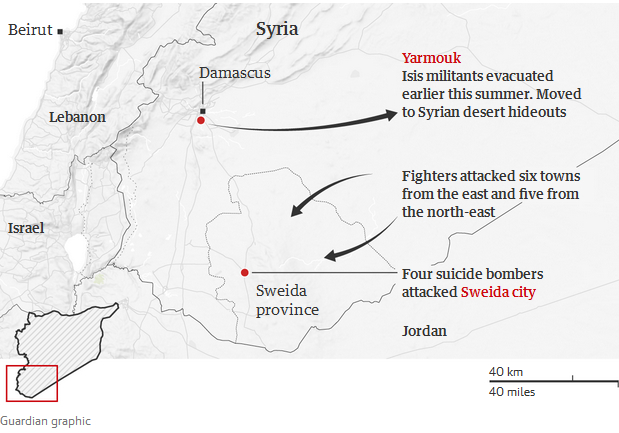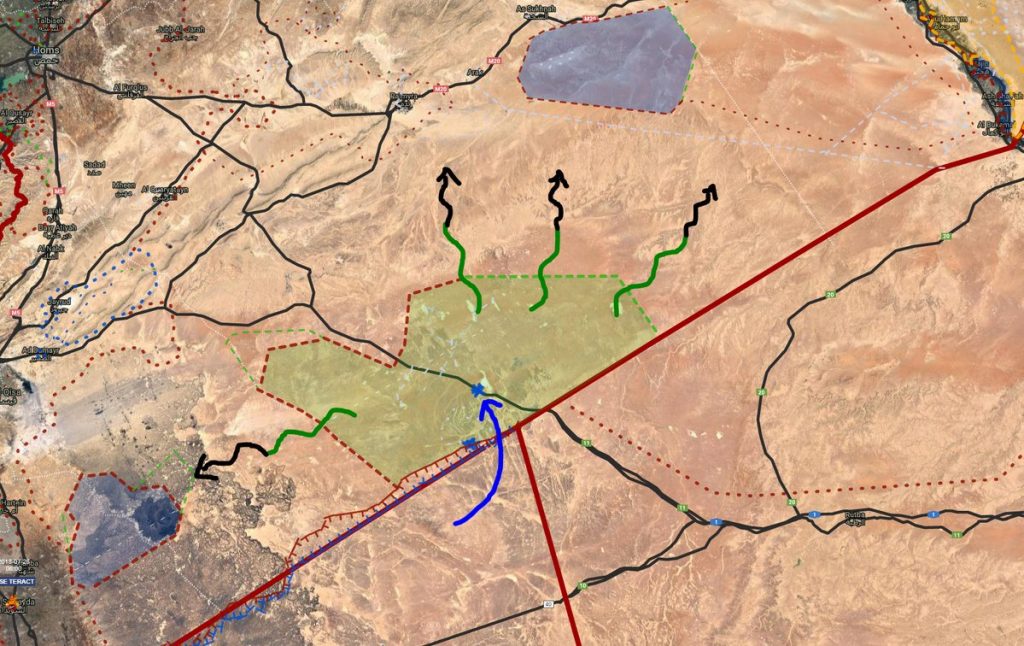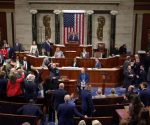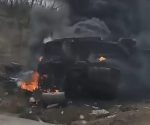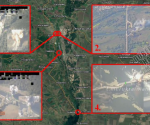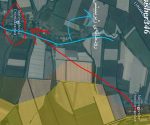Given that “our boys” are ISIS, who is responsible for the Suweida massacre?
On 25th July, in the early hours of the morning, ISIS fighters sneaked into a number of small towns located at the north and east of the Suwayda (Suweida) Governate, on the edge of the deserted Syrian steppe (or Badiyah) where in a pocket as yet conquered by the Syrian Government, the terrorists can still operate. This vanguard of what would appear to be a concerted attack on targets across Suweida and into the regional capital itself proceeded to kill people in their homes, and if the stories are true, had slaughtered whole families before local militia and Government forces could respond. The ISIS raiders had had some help – either from hostages or collaborators – to lure householders into opening their doors; this way they gained access to commit murder without attracting unwanted attention.
At some point, the terrorists were finally met by resistance in some places, although the town of Suweida suffered multiple suicide attacks as part of an assault on pro-Government defensive positions. It was these that provided the headline explanations in western corporate-media for 200-plus civilians killed, hence the BBC article titled “Syria war: More than 200 dead in suicide attacks”.
However, the Syrian Arab News Agency reported that out of three, two suicide attack attempts were foiled, and the one that occurred in the al-Souq area of town had resulted in “a number of citizens… martyred” – 38 according to Wikipedia. Therefore, most of the dead appear not to have been killed as the usual sort of collateral damage. It wasn’t war that took place in Suweida, it was murder by criminals – and it is significant that the BBC would want to elevate what happened to something militarily meaningful: for here is an arm of British intelligence, essentially, whitewashing the fact that most of the victims must have been killed in the initial raid when ISIS knocked on doors and killed the people as they answered them. Moreover, it emerged that women and children had been kidnapped; demands were made that the Syrian Government should release ISIS prisoners, and halt its attack on the ISIS enclave in Daara.
In fact, Wikipedia would report that
On the 31st of July 2018., in exchange for the release of the Druze women captured by ISIL in the raid in eastern Suweida, syrian army evacuated hundreds of ISIL fighters from the Yarmouk basin in western Daraa to their strongholds in the Badiya region in eastern syria desert.”
If this information is correct, then it appears that the operation at Suweida must have been launched specifically to create a bargaining chip with which to barter for the lives of the ISIS fighters in Daraa. It is true that the Syrian Government forces did rout the remaining ISIS presence in the southwest of the country on the Jordanian border on the 31st, so it is possible that it became feasible for ISIS to surrender there when permission to translate to the Badiya had been bargained for.
This might suggest that ISIS has a command and control structure that defies its incredibly poor strategic situation on the Syrian battlefield. Because it is supposedly hunted by both the US and the Syrians and Russians in the Badiyah, it shouldn’t be able to operate very well in the open. There are, apparently, some settlements which ISIS controls in their western pocket (the other pocket in the east, on the other side of al-Tanf, has been called the Mayadin pocket in these pages before), but presumably nothing that the Syrian Air Force has not yet attacked – as far as it can reach – in the course of its attempt to winkle ISIS out. In short, the ability of ISIS to maintain HQ facilities in the Badiyah is questionable. Indeed, ISIS is universally described as existing in cells in the area; this gives an impression of strategically separated units.
It’s been argued before in these pages that ISIS is “our boys” – or the British Army in disguise – and so any ISIS command and control mystery could well be explained by the fact that direction and orchestration is coming out of al-Tanf – the area on the Jordanian border controlled by the Combined Joint Task Force Operation Inherent Resolve (CJTF-OIR). There are three areas where we might find clues to support the theory.
1) The origin of the attack on Suweida – where is the location of the root of the operation whereby ultimate responsibility can be attributed?†
2) The characteristics of the attack – how do they betray the culprits?
3) The motivation for the attack – if denying the enemy territory is all in war, who benefits from pouring resources into what merely constituted a terror attack?
It is often the case that corporate-media provides evidence contrary to the narrative that it is being used to support. Unlike Syria, in Libya the embedded British corporate-media unwittingly gave a running commentary on British Armed Forces support for al-Qaeda. That being said, the tradition is maintained in Syria, even if presence on the ground is more indirect. A Guardian article on the Suweida presented a graphic (below) that shows the ISIS attack coming from the east. However, the arrows do not emanate from the ISIS cell pocket that sits inside of Suweida Governate, which is where we would suppose the attack to come. Now, one could put this down to the man who made the map sitting in Manchester (or is it London, these days?), not really knowing where anything was in Syria, or one could put it down to a decision being made about how much the Guardian readership needs to know about the precise location of the origin of the ISIS attack so that they don’t, even if they were capable of doing it, put two and two together to make four.
In actual fact, the Guardian has ISIS attacking from al-Tanf, and the explanation that we’re looking for could be Freudian slip. For it appears that ISIS has free rein in the desert area; we’ve already examined, here at FBEL, what appears to be a real phenomenon of US and UK Jaysh Maghawir al-Thawra (MaT) mercenaries moving from al-Tanf through the desert, and with UK forces embedded in them – this being the element that was able to call for RAF air support in an incident in the second half of June. Not only that, we have considered evidence that British military have been leading MaT through the desert, where there is a change into black hats, in support of an effort to link the Mayadin pocket with ISIS that had been stuck on the east bank of the Euphrates.
Moreover, we appear to have a report of ISIS travelling through US-policed areas on their way to the incident at Suweida. It hails from Elijah J. Magnier, a “Senior Political Risk Analyst” who claims to have “robust contacts” in Syria – and a man who appears to have been used as an authority before now by popular blog writers and alternative media:
There is no doubt that many circumstances helped ISIS to cross unnoticed by the continuous US presence in the air of al-Badiya, monitoring every single movement (the US hit twice a Syrian force breaking the safety perimeter minutes after the event).
This reportage includes a mention of the US attacking Syrians who may have encroached on the self-declared exclusion zone that the CJTF-OIR have set up around al-Tanf. The author has not come across any other sources that can support the claim. However, the issue to appreciate from this passage is that ISIS are moving around the countryside without intervention from the US. As we have seen, the US and the UK have not been shy about deploying aircraft beyond their exclusion zone, it is possible, at the very least, that ISIS were able to transit safely across US-supervised territory – if that is what they did – because of CJTF-OIR complicity.
In this game, we don’t have to wait too long for evidence to show that things are well beyond the US and the UK being complicit with ISIS. The Russians, in the last 48 hours, have accused the US of harbouring ISIS in al-Tanf. The following is hot off the presses today (and from al-Masdar News):
According to a statement from Russia’s Chief of the Main Operations Directorate of the General Staff of the Russian Armed Forces, General Sergei Rudskoy, the Islamic State’s numbers inside this large U.S.-controlled pocket [al-Tanf] has been steadily growing over the last few weeks.
Rudskoy said that the Islamic State is preparing to launch new attacks against the Syrian Arab Army (SAA) from this large pocket in southern Syria.
Specifically, the Russian general claimed that the Islamic State terrorists were planning to launch attacks on the Syrian Army’s positions in the Al-Sweida, Damascus, Homs, and Deir Ezzor provinces.
This development comes on the heels of statement made in May by Russian Foreign Minister, Sergei Lavrov,
We are witnessing an increasing number of armed groups appearing in this region, including the Rukban refugee camp [in the al-Tanf district], which according to our information, is related in one way or another to Daesh and other extremist structures.
That ISIS are harboured in al-Tanf provides a solution for the puzzle of how they could be armed, fed and watered in order to carry out operations like the Suweida one. If they have hideouts in the Badiyah – and there are many accounts of this being the case – then these can really only be useful for temporary survival. Being supplied is an entirely different matter.
In relation to this issue, an astute Twitter user, who goes by the handle @GeromanAT, posted a graphic on his timeline that is ever so much more useful than the Guardian one above.
What it shows is a representation of arrangements that are likely to be in place whereby ISIS can reach the pockets either side of al-Tanf. Supplies come in from Jordan, and then roaming cells can disperse into the desert, or bigger operations can be staged with al-Tanf as the starting point.
If the Guardian’s source is to be believed, then a number of ISIS fighters involved in the Suweida operation were caught in various villages by local militia, and contrary to reports that are obviously for pushing a narrative whereby the Druze of Suweida are seen to have been abandoned by the central Syrian Government, it appears that units of the Syrian Arab Army also got involved. These forces are in the area taking part in a general anti-ISIS operation that appears about to be escalated in the near future, if many reports are to be believed.
ISIS snipers were also positioned outside the town limits in support of their elements who had made their way into the settlements and had ensconced themselves in entrenched positions. There was also a number of suicide bombers who hit Suweida city – as discussed above.
The final element of the operation was that which started in the early hours between 3.50am and 4.30am. This element carried out the primary objective of the operation – to kill civilians indiscriminately, and to kidnap them. From the Guardian:
“They attacked homes in a coordinated attack. They knocked on doors, and then entered the homes and killed people in there,” said Ahed Mrad, a journalist from Sweida. “A lot of victims fell before any bullet was fired because they were going into the homes and slaughtering people silently, at dawn, without anyone being aware.”
This means that everything else about the operation was a decoy for this silent component. There is an important distinction to make between the two parts of the operation. All the ISIS fighters that confronted local militia and the SAA in the gun fighting would have been expendable – 75 killed according to the Syrian Arab News Agency – but the ones that killed and captured the civilians need not have been, because it appears that they ran very little risk of being opposed by anyone who would try to kill them. Indeed, it could very well be the case that the firefighting ISIS element were in place to protect the murdering and kidnapping element, and delay, or even prevent, the pro-Government forces from engaging them. Furthermore, because what happened in the outlying Suweida villages is the same sort of thing that happened at Panjwai in Afghanistan in 2012, there is a possibility that the troops carrying out the primary objective were US and even UK special forces.
If the reader is not familiar with the Panjwai incident, please look at the Luikkerland articles that are now archived here at FBEL:
Is the US trying to stoke conflict in Afghanistan as a pretext for continued occupation? (link).
The Panjwai district eyewitness accounts – including those that the corporate-media won’t countenance (link).
Basically, US special forces went into a village and killed people in their beds. The atrocity was pinned on a rogue individual – in fact, a patsy, because obviously those involved in the planning and execution couldn’t have themselves liable for war crime. As such, then, we have, in Suweida, a demonstration of a US modus operandi as witnessed in a previous campaign.
When it comes to the motivation for the attack on Suweida, some think that ISIS is trying to exacerbate tensions in the relationship between the Druze of Suweida, and the Central Government. The Druze, collectively speaking, have refused to enlist in the Syrian Arab Army – as the stories go. And so, much is being made, in such quarters, of the relocation into the Badiyah, by Government, of the ISIS fighters who surrendered in Yarmouk earlier in 2018, as indication that the Government think that the Druze as not worthy of protection by the State:
The coordinated assault raised questions over the competence of Syrian government forces, the capabilities of Isis and its ability to sow chaos – and the reconciliation deals that the regime of Bashar al-Assad has used to reclaim control of territory around the country.
There are now stories going round of the political party affiliated with the Syrian Democratic Forces setting up an office in Suweida, so the attack could be about alienating the Druze from the central government in order to expand territory in Syria that comes under US influence. Of course, is this is true, it begs the question, why would ISIS be interested in bringing this state of affairs about?
The author feels that if the Druze are so independent of the central Syrian Government as they are made out to be, they aren’t suddenly going to trade it in for being a US puppet and a deal with the devil they don’t know. However, this might not stop the US – not ISIS – from trying to bring a change about.
On the other hand, the explanation for the Suweida operation could be that it was an attempt to influence Syrian Government decision making about what to do with captured ISIS fighters in Daraa. The Syrians have long since operated a policy of emptying out populated areas by negotiation as a sort of postponement of the inevitable. Where they have been sent to the “countryside” of the Badiyah – and the author isn’t aware that the Syrian Government admits it does this – the intention must be to wipe them out. Assad has said that that those holding al-Qaeda style “dark ideologies” won’t be negotiated with in the end and the only way to deal with them is to remove them permanently. On the other hand, while many are expecting a big fight in Idlib, where most of the vanquished from the west of Syria have been sent, the author can foresee that there will be further reconciliation before all the fighting is through – but this is an aside.
There are reports that ISIS fighters were taken prisoner in Daraa – but we can’t rely on other news, despite Syrian Government policy thus far, that they have already been relocated to the Badiyah, because the war in the country is now imminent, and why would the SAA release ISIS at this point – unless, of course, they were blackmailed to do it.
Swinging the decision that the Suweida operation was about recouping military personnel from Daraa is the information provided by the Russian General Sergei Rudskoy; to wit, there is a build up of ISIS in al-Tanf for future offensives. The author did “say” in the previous FBEL article on Syria, that “the only way that the US and the UK can cling on [in Syria] is to reprise ISIS – except it isn’t really ISIS”.
Moreover, the identity of those pulling the strings of ISIS and for what purpose is not lost on the Syrian Government either: this is from the Syrian Presidential twitter account:
President Assad emphasized during his meeting with Lavrentiev that today’s crime [the Suweida incident] shows that the countries supporting terrorism are trying to reintroduce life in the terrorist organizations to keep a paper in their hands [a bargaining chip?] to make political gains. However, these attempts will only succeed in wasting the capabilities of the peoples of these countries and shed more innocent blood.
Interesting last sentence. Maybe it’s why the British Government can’t find the staff to execute a hoax in Salisbury.
† On top of all the evidence presented here, Fars News reported that the Arabic language al-Mayadeen news channel had a clear idea that the attack had been launched from al-Tanf.




